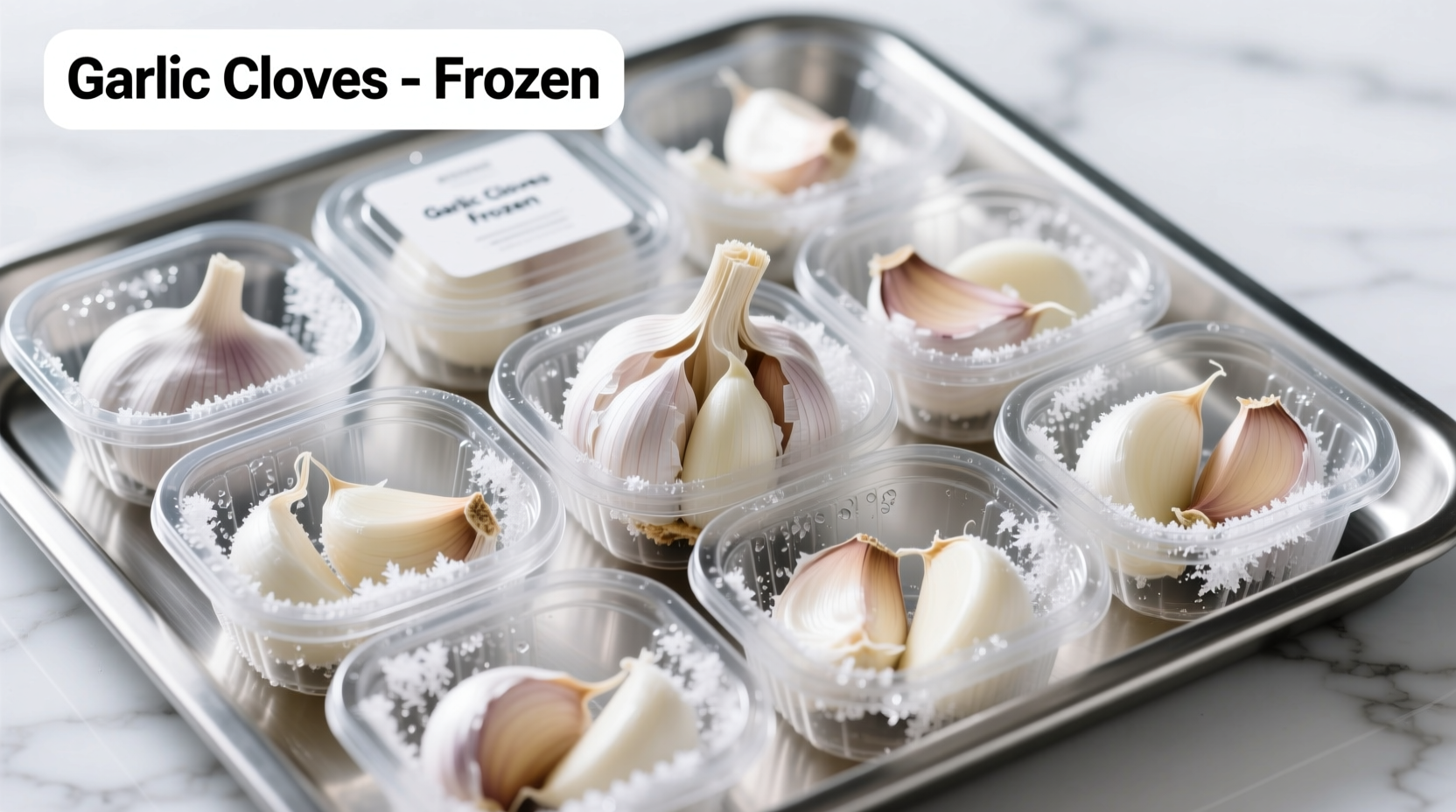The Practical Truth About Freezing Peeled Garlic
Many home cooks wonder whether they can freeze peeled garlic to reduce waste and save time. The answer is a definitive yes—with proper technique. Freezing peeled garlic correctly preserves its essential oils and flavor compounds while preventing freezer burn and oxidation. Unlike many perishables, garlic actually benefits from freezing due to its high allicin content, which remains stable at low temperatures according to research from the National Center for Home Food Preservation.
Why Freezing Peeled Garlic Makes Sense
Garlic waste costs the average household $15-$20 annually according to USDA food loss statistics. Freezing peeled cloves solves multiple problems:
- Eliminates daily peeling hassle for frequent garlic users
- Prevents sprouting and mold development in humid environments
- Maintains enzymatic activity better than refrigeration alone
- Preserves allicin content (garlic's key bioactive compound) effectively

Step-by-Step Freezing Method Chefs Actually Use
Professional kitchens freeze garlic using these precise steps to maintain maximum quality:
Preparation Phase
- Use only firm, plump cloves without brown spots
- Peel completely and rinse under cold water
- Pat dry thoroughly with paper towels (critical moisture control step)
- Optional: Lightly coat cloves with olive oil to prevent oxidation
Freezing Techniques Compared
| Method | Best For | Storage Duration | Quality Preservation |
|---|---|---|---|
| Single cloves on tray | Individual portions | 12 months | ★★★★☆ |
| Minced in oil cubes | Ready-to-cook applications | 6 months | ★★★☆☆ |
| Whole cloves in vacuum seal | Long-term storage | 18 months | ★★★★★ |
Proper Packaging Process
- Arrange cloves in single layer on parchment-lined tray
- Flash freeze for 2 hours until solid
- Transfer to airtight containers or vacuum-sealed bags
- Remove excess air and label with date
- Store at 0°F (-18°C) or below
How Frozen Garlic Changes Over Time
Understanding garlic's transformation during freezing helps optimize usage. Based on food science research from UC Davis:
Garlic Freezing Timeline
- 0-3 months: Near-fresh quality, minimal texture change
- 4-6 months: Slight softening, ideal for cooked applications
- 7-9 months: Noticeable texture change, best for sauces and soups
- 10-12 months: Significant softening, use only in strongly flavored dishes
- 13+ months: Flavor degradation begins, discard after 18 months
When Not to Freeze Garlic
While freezing works well for most applications, certain situations require alternative approaches:
- Raw applications: Thawed garlic develops slightly mushy texture—avoid in aioli or fresh salsas
- Whole bulb preservation: Freezing whole bulbs causes cellular damage—refrigerate instead
- Long-term raw storage: Pickling preserves texture better for raw uses
- Commercial processing: Industrial freezing requires specialized equipment to maintain cellular structure
Using Frozen Garlic Effectively
Maximize culinary results with these chef-recommended techniques:
- Add frozen cloves directly to hot oil—no thawing needed for cooking
- Grate frozen garlic through cheese grater for instant minced texture
- Use oil-packed cubes in pasta sauces and braises
- Thaw overnight in refrigerator for salad dressings
- Roast frozen cloves at 375°F for mellow, caramelized flavor
Alternative Preservation Methods Compared
Freezing isn't the only option. Consider these alternatives based on your cooking needs:
| Method | Shelf Life | Best Uses | Flavor Preservation |
|---|---|---|---|
| Freezing (peeled) | 12 months | Cooking, roasting, sauces | ★★★★☆ |
| Refrigeration (peeled) | 7 days | Immediate use | ★★★☆☆ |
| Pickling | 6 months | Salads, sandwiches, raw applications | ★★★☆☆ |
| Drying | 12 months | Spice blends, rubs | ★★☆☆☆ |
Common Freezing Mistakes to Avoid
Prevent quality issues with these professional tips:
- Mistake: Freezing wet cloves Solution: Pat completely dry before freezing
- Mistake: Using regular plastic bags Solution: Use freezer-specific containers with tight seals
- Mistake: Freezing whole bulbs Solution: Peel cloves first to prevent texture damage
- Mistake: Storing near strong odors Solution: Keep in odor-proof container
Final Verdict: Freezing Works When Done Right
Freezing peeled garlic properly delivers excellent results for cooked applications while reducing food waste significantly. The key is controlling moisture, using proper packaging, and understanding how frozen garlic performs differently than fresh. By following these evidence-based techniques, you'll maintain maximum flavor and convenience in your kitchen.











 浙公网安备
33010002000092号
浙公网安备
33010002000092号 浙B2-20120091-4
浙B2-20120091-4